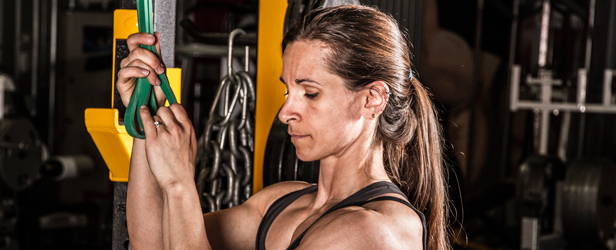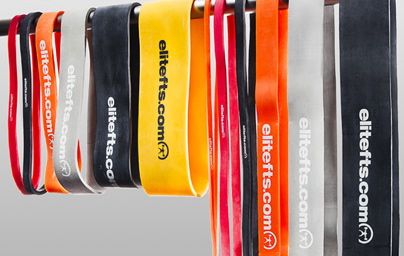
Everyone that has written an article for elitefts™ always gives us good tools on how to improve our performance. Some of those tools will work for some people, and other tools might not work at all. But if one person can learn something from an article and utilize that in their training, then the article was successful. So, when I finished reading Jim Wendler’s The Circa-Maximal Squat Phase, I was glad he said the things he did. He gave us the guidelines, examples, and ideas that every person will do things a bit differently.
Now, when I attempted my first circa max phase a few years back, the only way I knew how to do it was by watching Paul Childress. Honestly, now, as a 132-pound female, was I really supposed to use a strong and average band for my circa max phase? I mean, that’s what Jim said in his article, so that must be it. Next thing you know, I’m stapled on the box. What’s going on? Jim said…… oh yeah, those were GUIDELINES, not rules.
So, use this article as a guideline.
In this article, I will touch on the basics of the speed strength phase, which is the phase before circa max. It uses heavy band tension and lower bar weight and focuses on pushing heavy weights fast. The weight gets very heavy, very fast at the top, due to all the band tension, but because the bands deload at the bottom so much, you will learn to push fast out of the hole and keep pushing through as the bands get tighter. It preps your nervous system to handle the heavy weights of the circa max phase.
Let me first note that the first time I used a speed strength/circa max phase, I had already totaled elite, so it’s not like I was new to the sport and decided to jump into all this band stuff that everyone’s talking about. For the longest time (prior to totaling elite), I used only bar weight for speed work. Then my second trip to Westside, Louie had me try the light bands with 135-pound bar weight—I became stapled. Sure, a little embarrassing, but no one there cared. I tried it again, this time, listening to everyone’s cues on staying tight, pushing out on the belt, keeping knees out, and sitting back. My point is, you must start somewhere. That’s how I got strong in the first place, by doing the basics.
Back to the speed strength cycle, I’ll give a few examples since not everyone reading this is 5’3” and 132 pounds. I find it easier to work backwards from week three. The third week, you should be close to 100 percent of your competition squat (bands + bar weight). Week three's percentage will be approximately 30 - 35 percent. Since I squat 425 pounds, this would put the bar weight at 125 pounds. Now, I’m looking for the weight to be near 100 percent of my squat max or 425. So, if a strong band equals approximately 200 pounds at the top and a light band equals about 80 pounds + the 125 pounds of bar weight, that equals 405. Pretty darn close. And if I need to adjust the bar weight by week three, I could increase it a little. But let’s stick with the plan for now.
Moving on to week two: This week, the percentage is approximately 25 - 30 percent, or for me, 105 pounds. Finally, week one percentage is 20 - 25 percent, or 85 pounds. (Since I already figured out the band tension, that remains the same.)
Another example would be my husband, Matt Ladewski, who squatted 825 at 242 at a meet.
Here's what his plan looked like:
Note: His band tensions for the strong and light bands are higher because he’s taller.
WEEK 1: 195 + strong + strong + light (25% of 800; 725 pounds total at top) WEEK 2: 235 + strong + strong + light (30% of 800; 765 pounds total at top) WEEK 3: 275 + strong + strong + light (35% of 800; 805 pounds total at top) WEEK 4: Deload with just bar weight WEEK 5: Start circa max *Following this cycle, he squatted 825.







